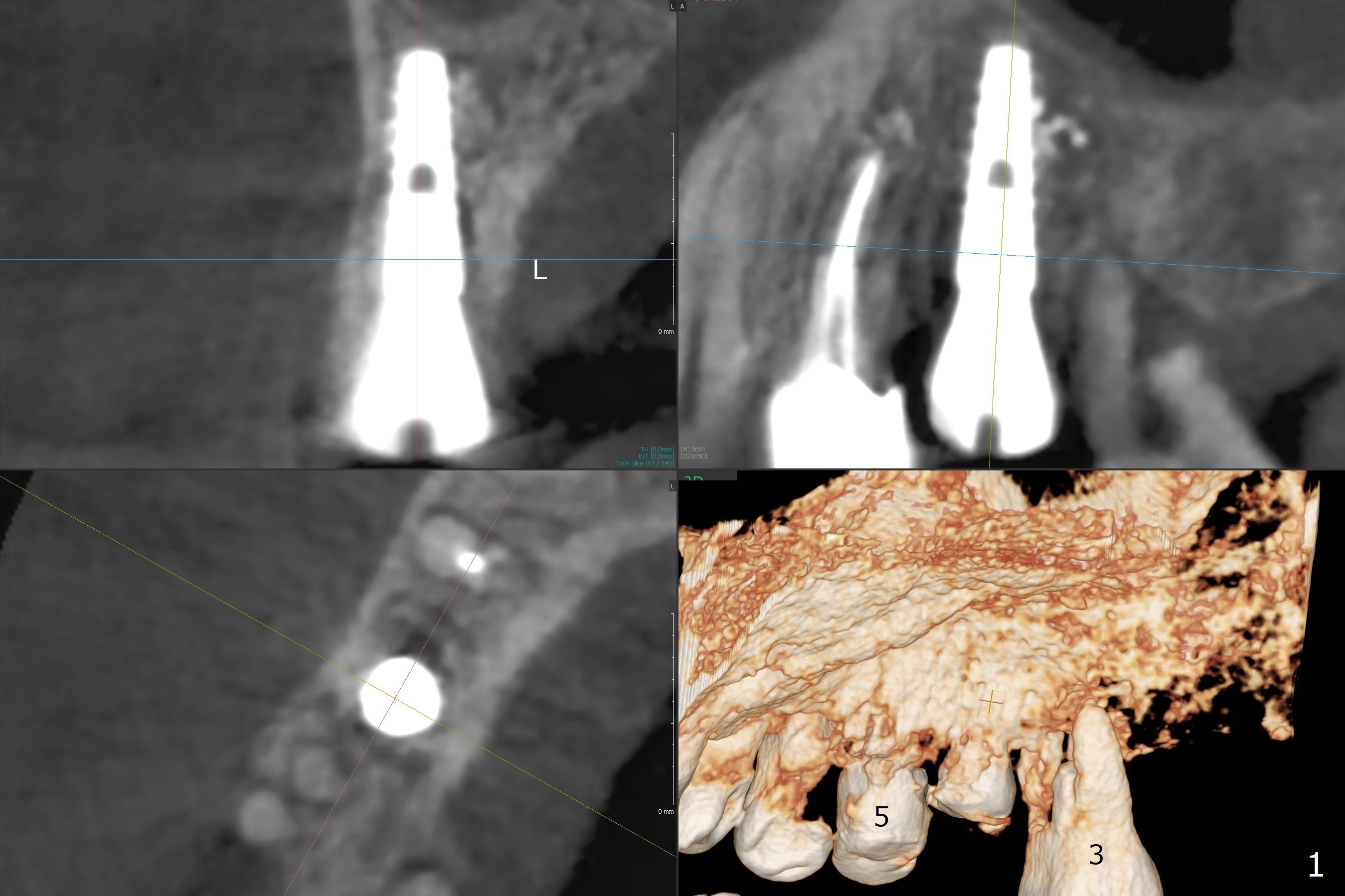
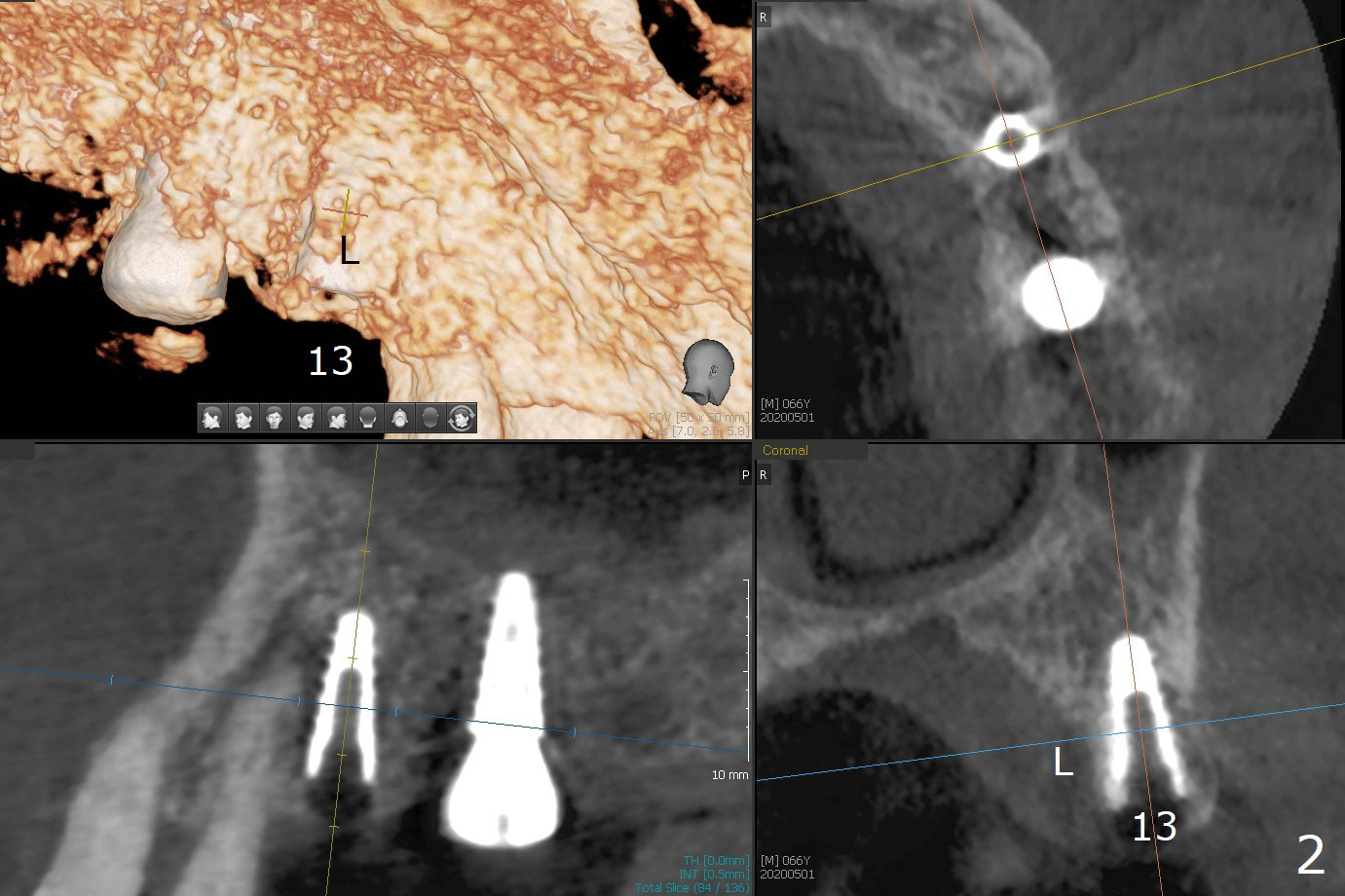
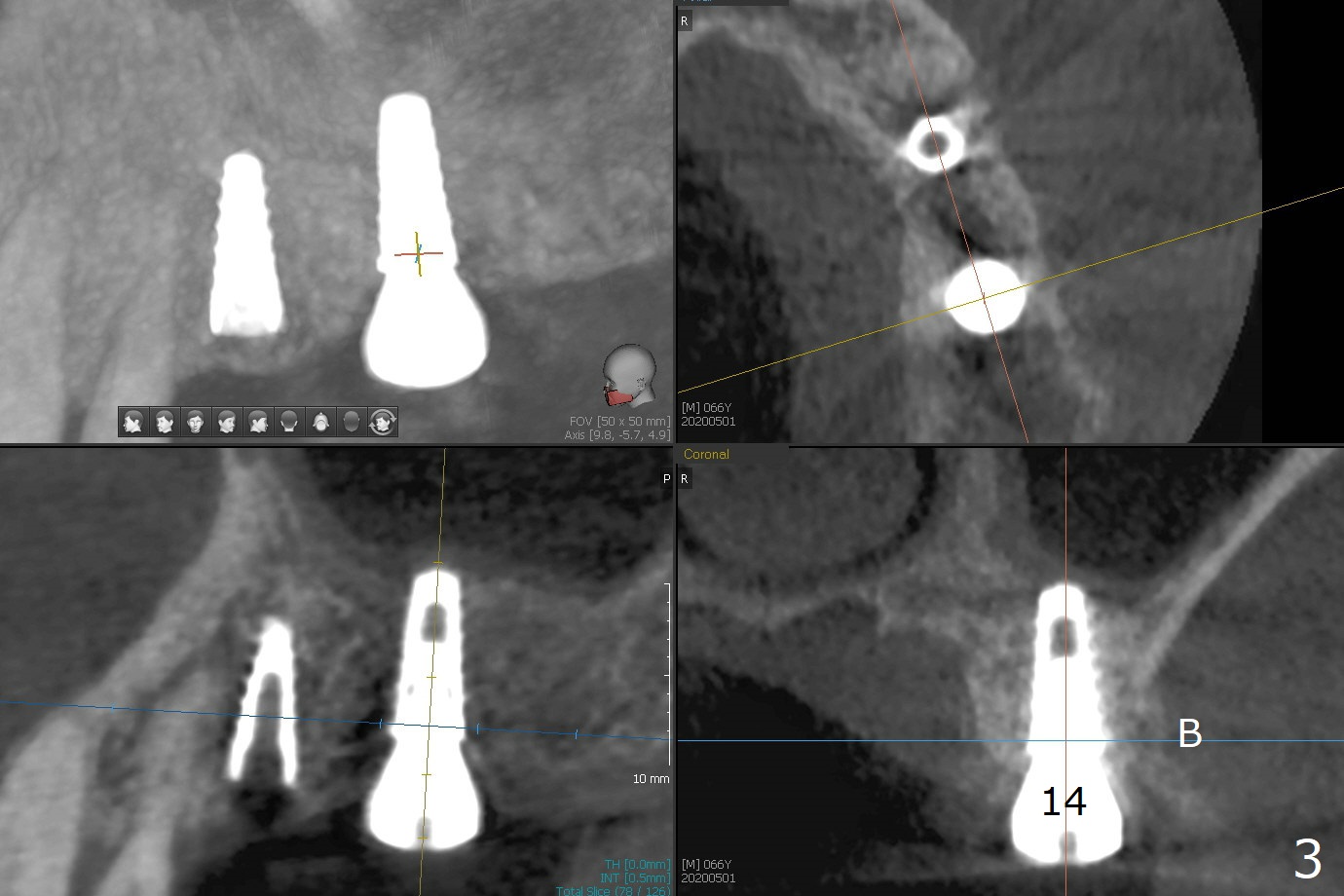
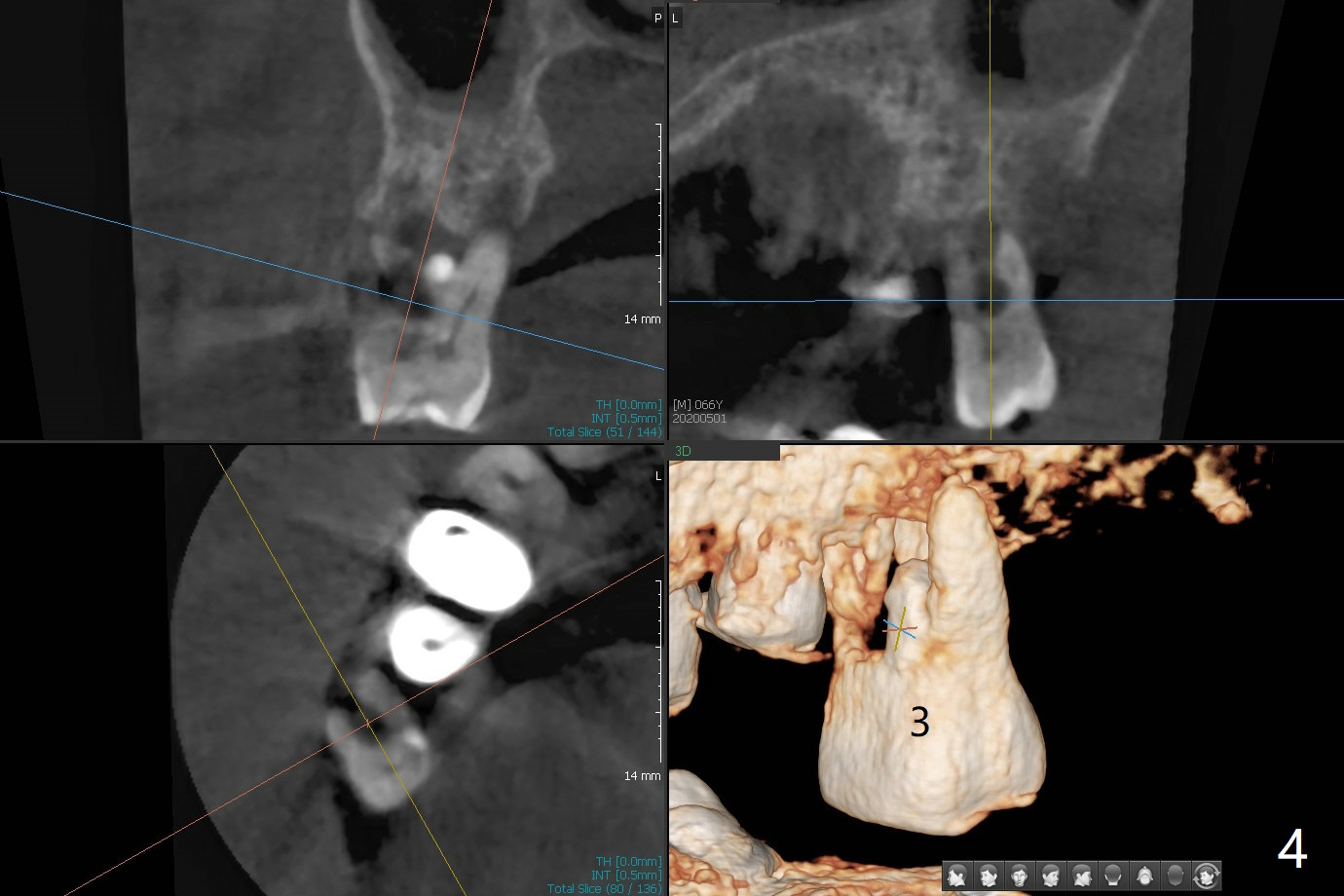
,%2014%20uncover%204.6%20profile%20drill,%206x4.jpg)
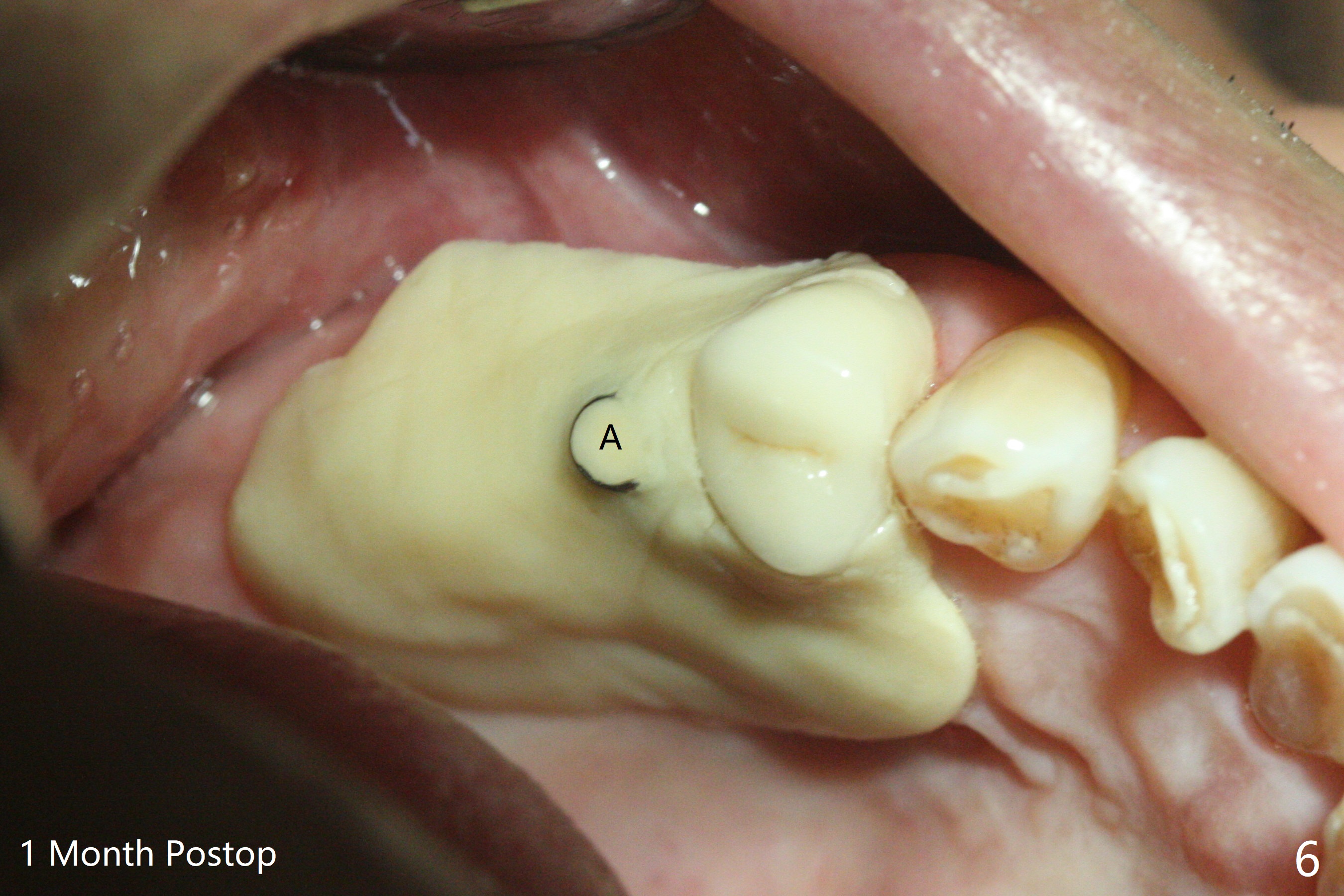
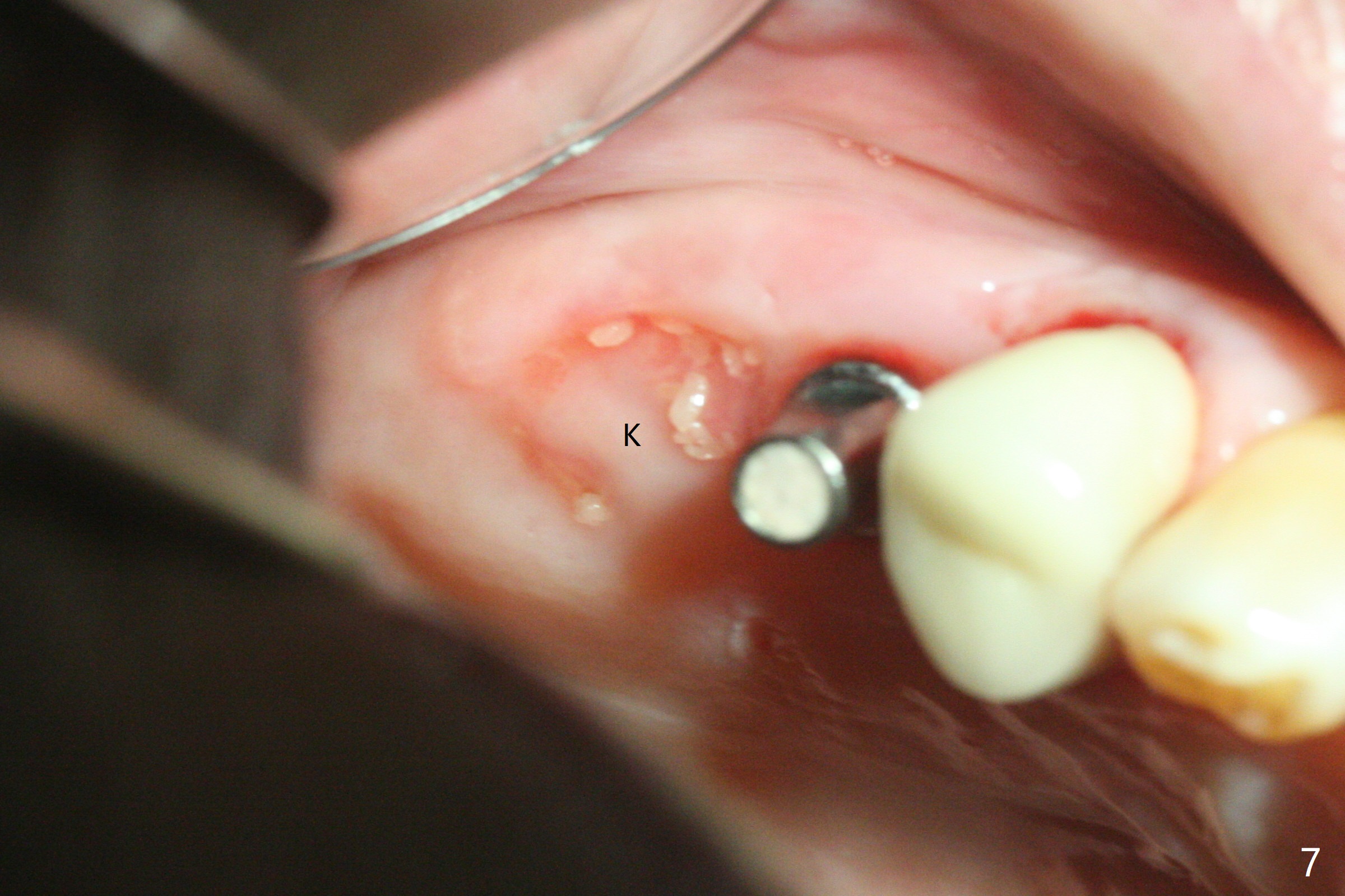
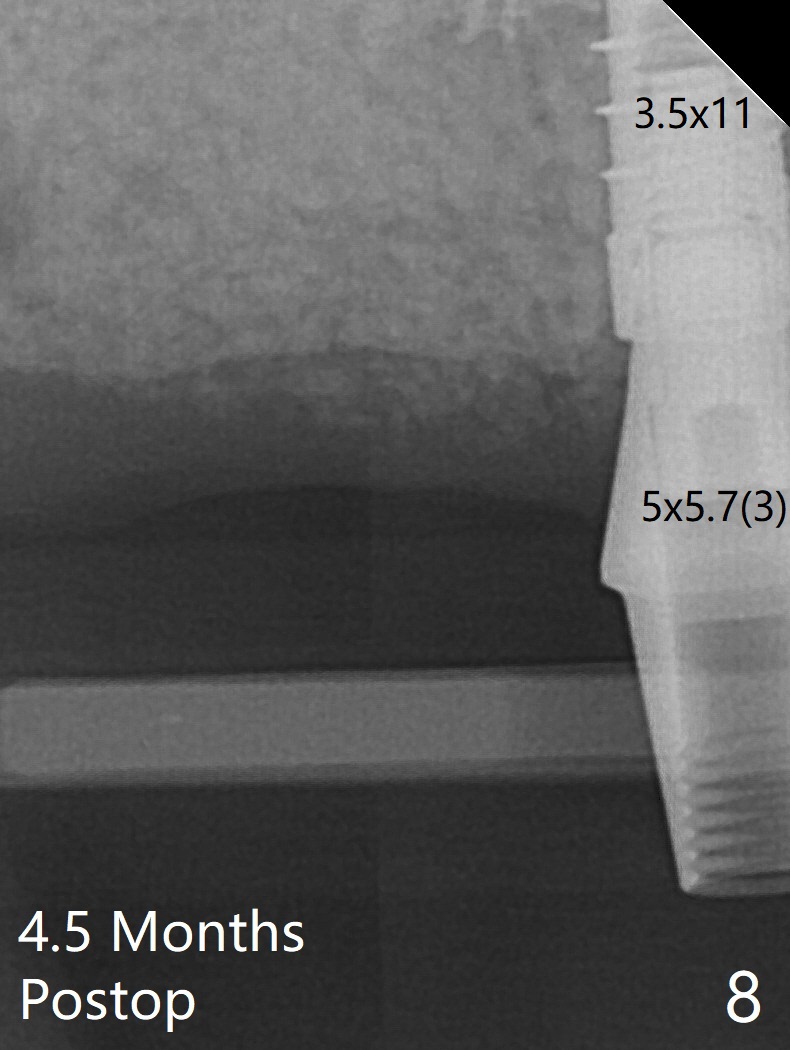
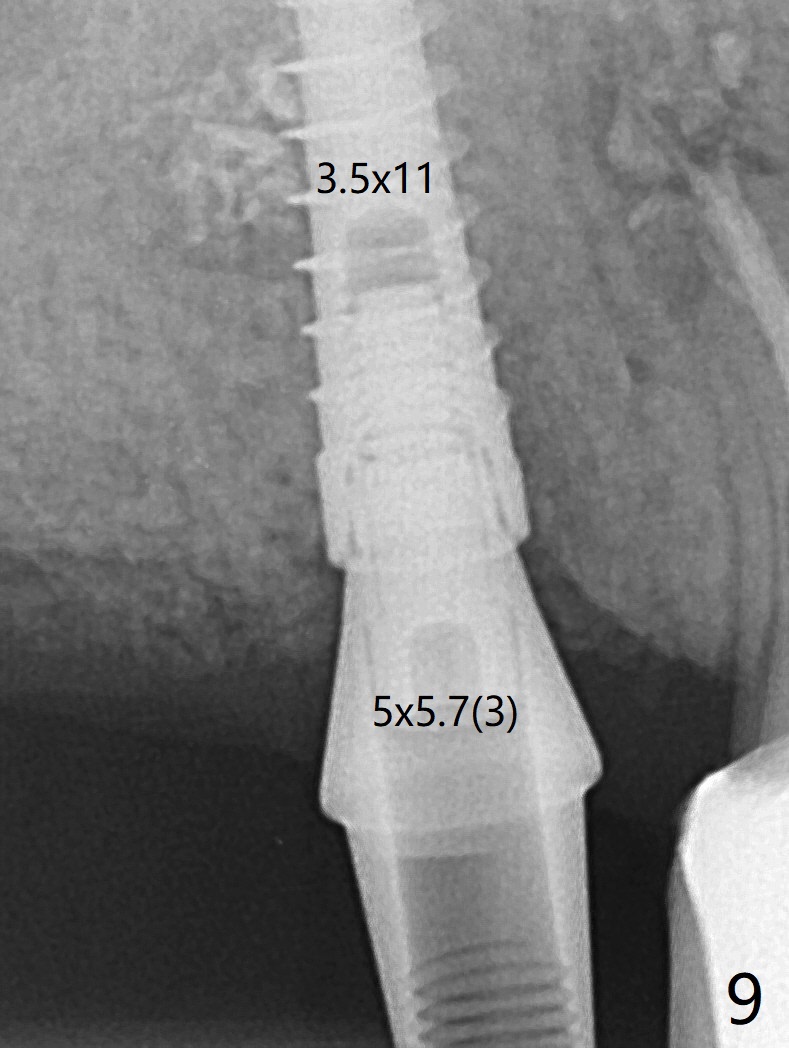
.jpg)
,%2014%205.5x5.7(4)%20BW.jpg)
,%2014%205.5x5.7(4)%20PA.jpg)
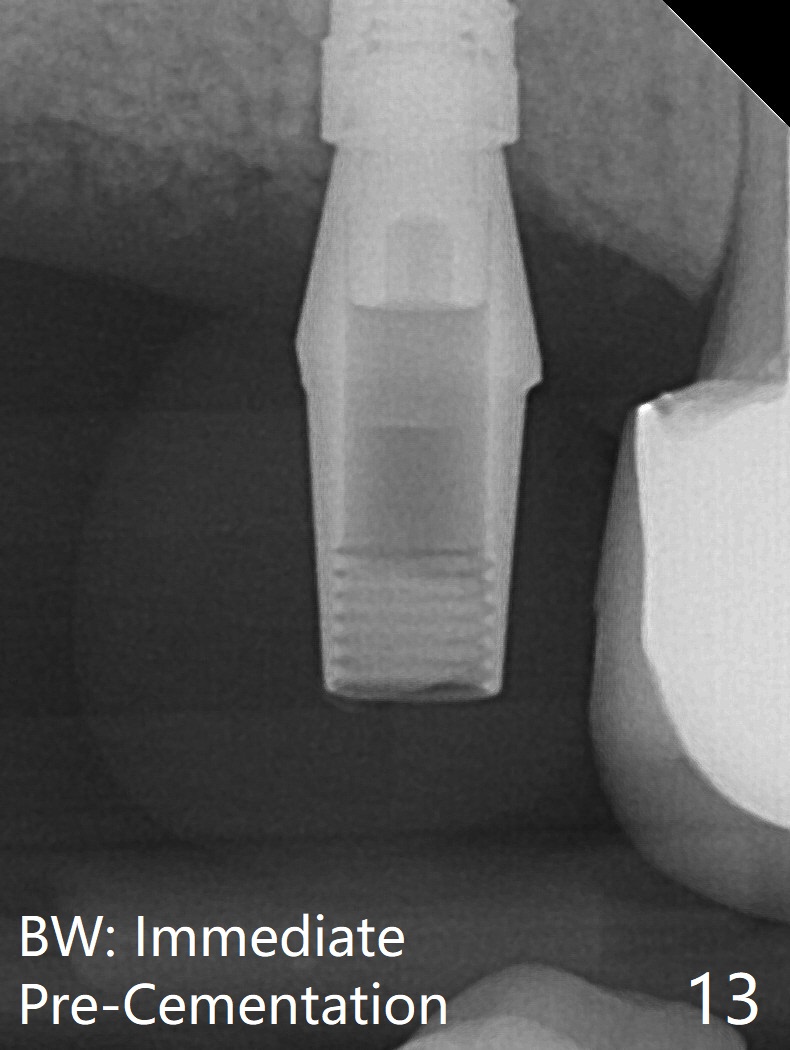
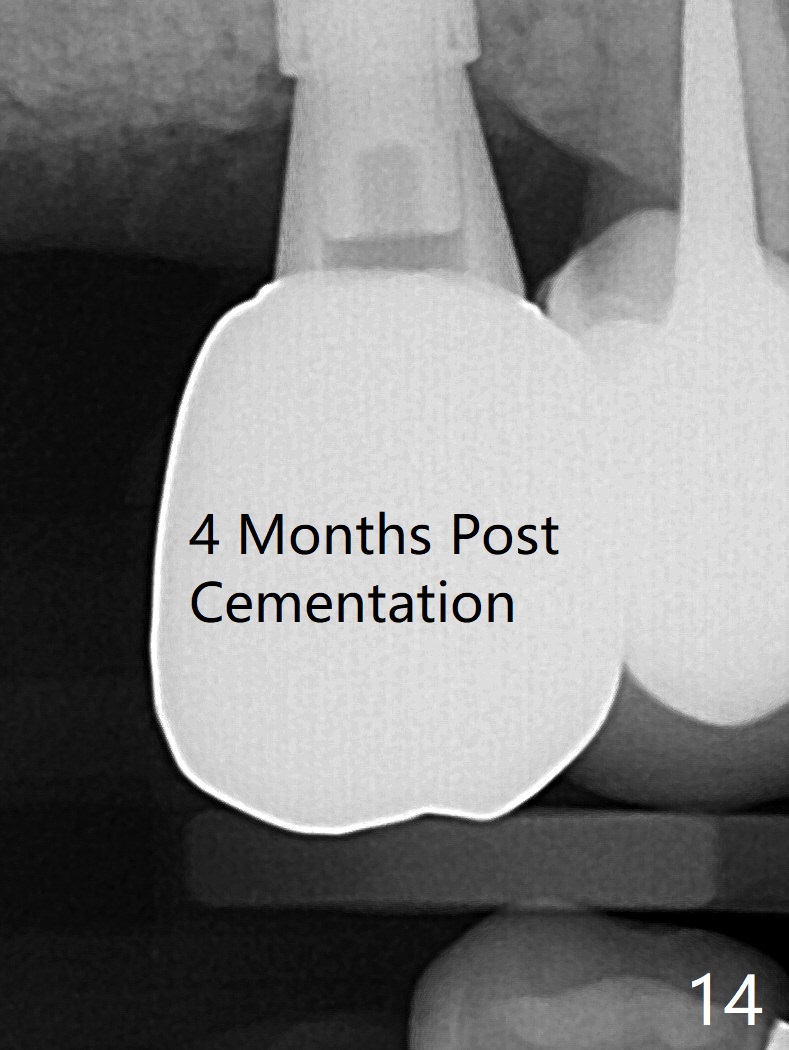
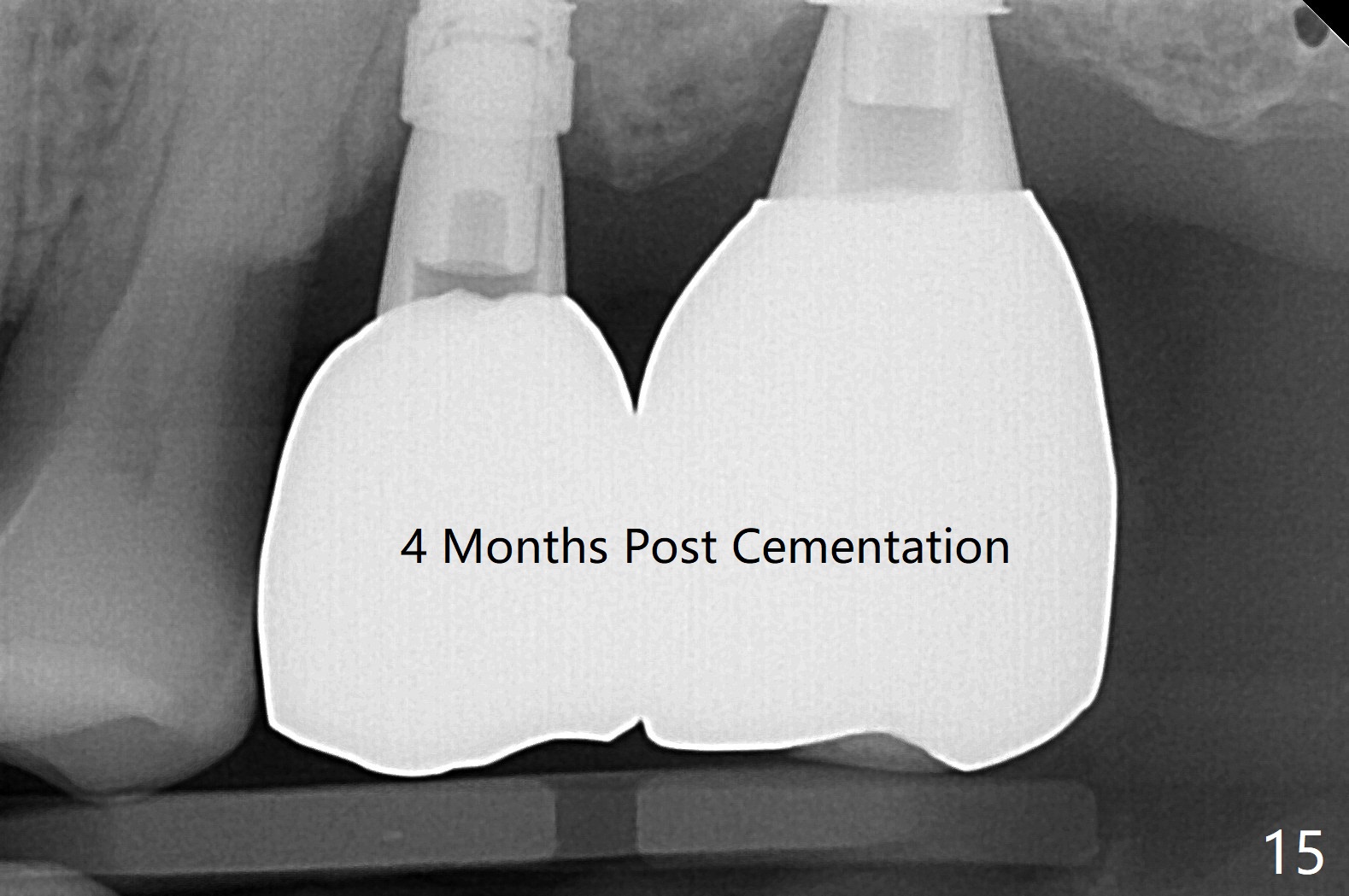
 |
 |
 |
||
 |
,%2014%20uncover%204.6%20profile%20drill,%206x4.jpg) |
 |
||
 |
 |
 |
.jpg) |
,%2014%205.5x5.7(4)%20BW.jpg) |
,%2014%205.5x5.7(4)%20PA.jpg) |
  |
 |
||
Autogenous Bone
The patient returns for #4 extraction and immediate implant the 1st day clinic reopening after coronavirus lockdown. To reuse autogenous bone for #4 buccal gap closure, delayed implants are also placed at #13 and 14. It is much easier to determine the placement level of the immediate implant (open socket) with guide than that of the delayed ones (flapless) clinically. Immediate postop CT is taken for implant placement level confirmation (Fig.1-3). In fact the autogneous bone is too soft to be packed into #4 socket gaps. It has to be mixed with allograft to be packable. There is oozing when #14 healing abutment is placed. The hemorrhage is severe 4 days postop. The healing abutment is replaced by a healing screw. Hemostasis is achieved when the access is closed with GEM Cap and 4-0 Chromic gut suture. The patient will return for #3 extraction and socket preservation 1 month postop (Fig.4). To prevent postop hemorrhage, a cemented or temporary abutment will be placed at #4 before anesthesia, while .5 or 1.0 cc Augma bone will be placed at #3, covered with collagen plug and acrylic. In fact he cancels the appointment once because of symptom relief and will return 2 months postop. Sticky bone (Fig.5 *) and PRF is used at #3 for hemostasis, while a 5x5.7(3) mm pair (final) abutment is used to hold acrylic dressing in place. The latter remains in place with good oral hygiene 1 month postop (Fig.6 A: abutment). When the acrylic dressing is removed, the socket heals (Fig.7 K: the gingiva between the buccal and palatal sockets when the tooth was removed). The patient returns for impression 4.5 months postop. When the 5x5.7(3) mm abutment at #4 is reseated after cleaning, there is no horizontal gap between the abutment and implant in BW (Fig.8), while there is in PA (Fig.9). When a smaller abutment is seated (Fig.10), there appears to be a horizontal gap, whereas there is no vertical one. The situation is the same with #13 (Fig.11,12). The common denominator is 3.5 mm implant. With suspicion, BW is taken for the implant at #4 immediately before cementation (Fig.13). It appears that the abutment is most likely seated completely. There is no bone loss or screw loosening 4 months post cementation (Fig.14,15). One month later the patient agrees to have 3 lower implants to replace RPD.
Return to No Deviation Next Possible Implants 1-Piece Prevent Screw Loosening 矫正,糖尿病,种植水平 Xin Wei, DDS, PhD, MS 1st edition 05/01/2020, last revision 03/21/2021